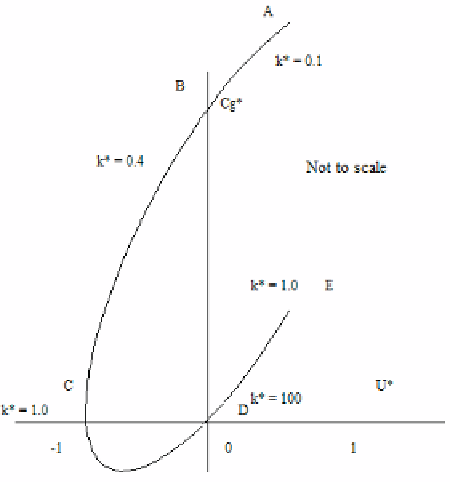Geology Reference
In-Depth Information
encounters a second focus at D where it must remain trapped. For positive U
*
,
two sets of waves exist, but both have positive group velocity relative to a
ground-fixed observer. A wave approaching D from E, therefore, cannot reflect
and is once more trapped; but the high energy waves found at D have infinite
wavenumber and may be damped by viscosity.
Figure 7.1.
Linear gravity waves on variable currents.
Wave solutions do not exist for U
*
less than -1 within the framework of
linear theory. An extension of the present discussion to account for finite
amplitude nonlinear effects is offered in Chin (1979, 1980b, 1981), but for the
purposes of this topic, linear results will suffice. The wave trapping and
instability ideas uncovered here for water waves are directly analogous to the
lateral wave instabilities described in Chapter 4 for bending disturbances
propagating on variable axial strain fields. That analysis was motivated by the
earlier work on gravity waves just described. The “kinematic barrier” predicted
here for water waves, and in Chapter 4 for bending instabilities at the neutral
point in drillstrings, are both quite real, and represent manifestations of simple
linear kinematic wave theory. Used properly with the correct physical picture,
we have shown in this topic how simple models describe many complex
phenomena observed in nature.









Search WWH ::

Custom Search